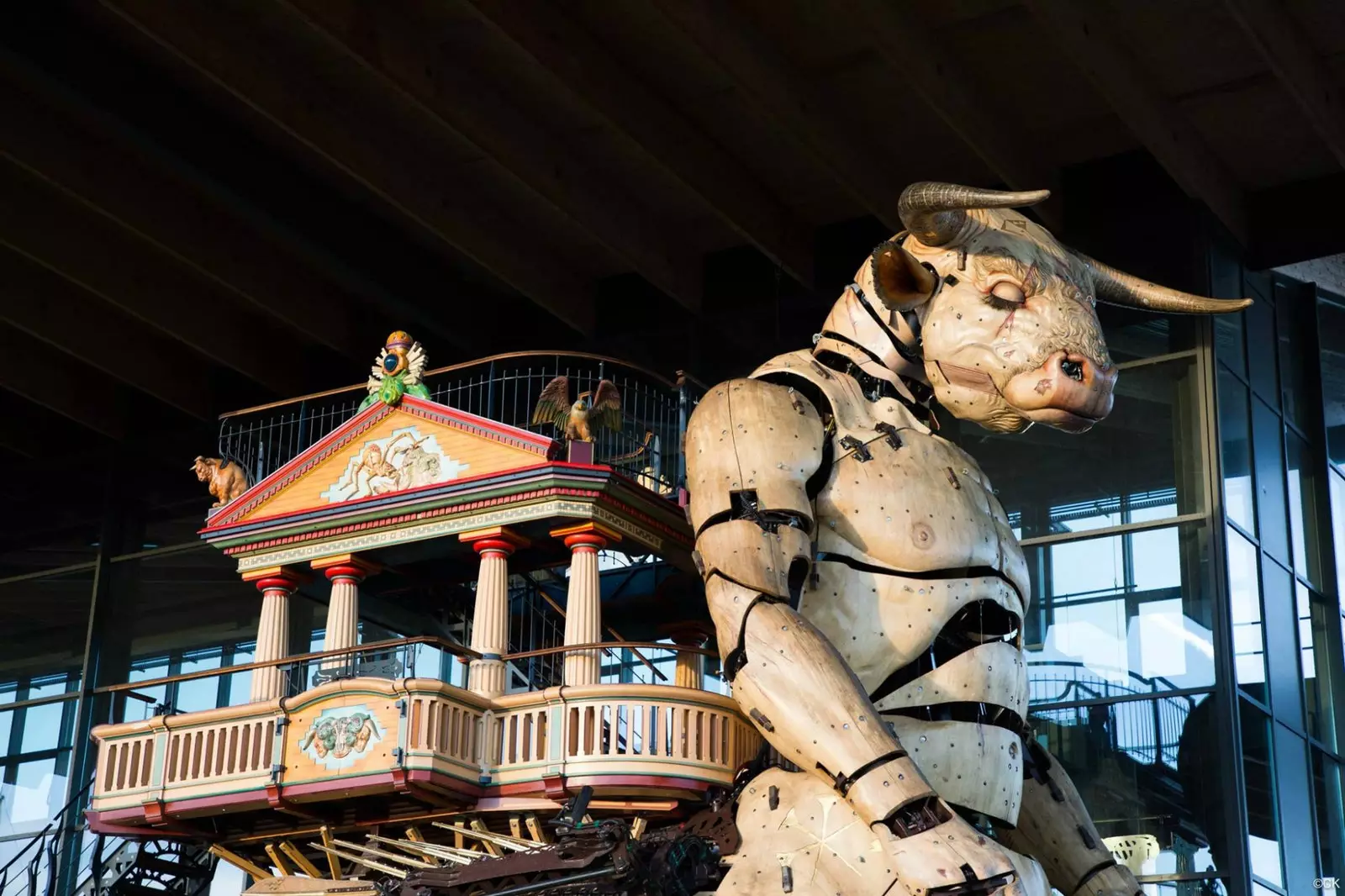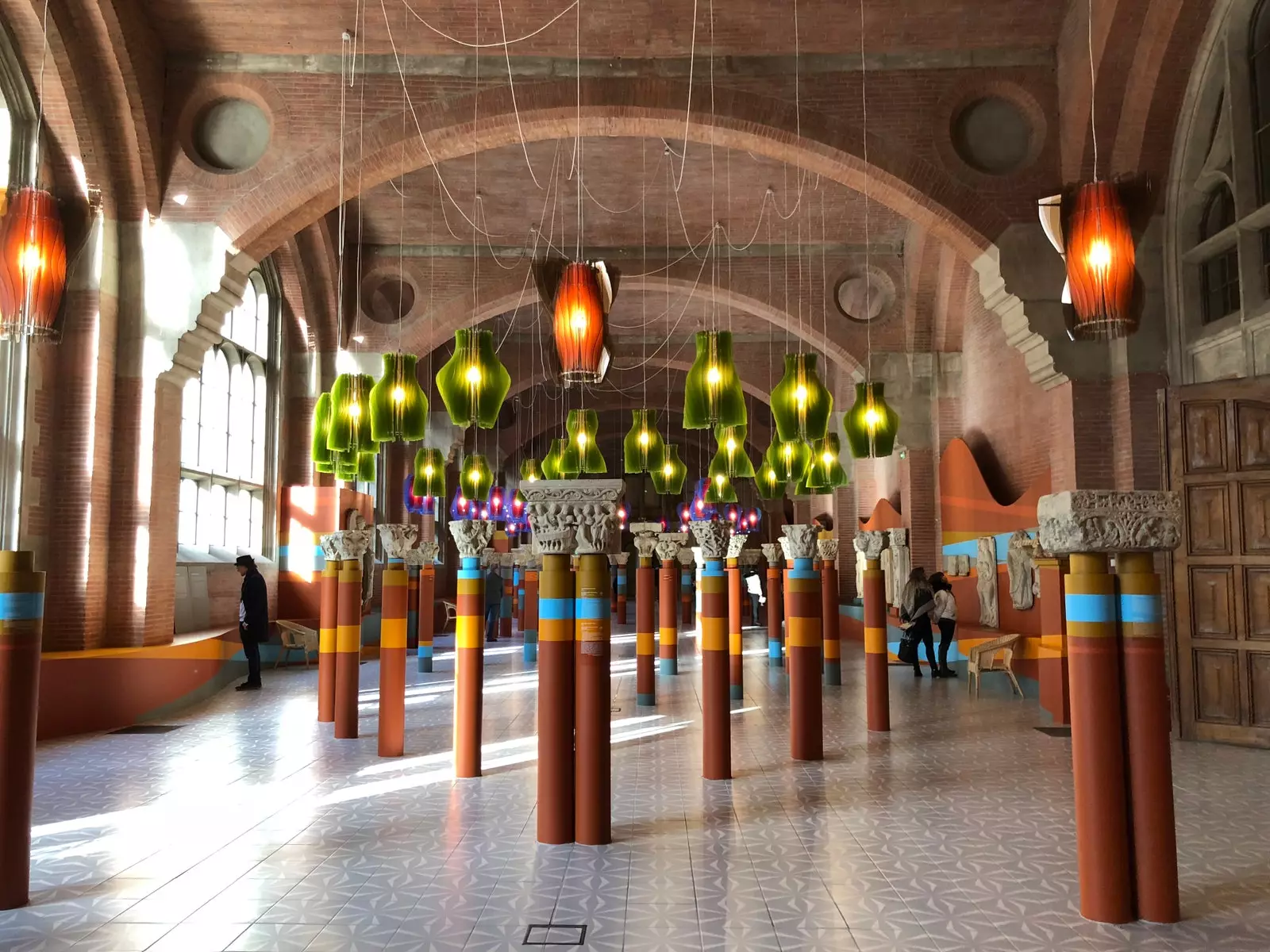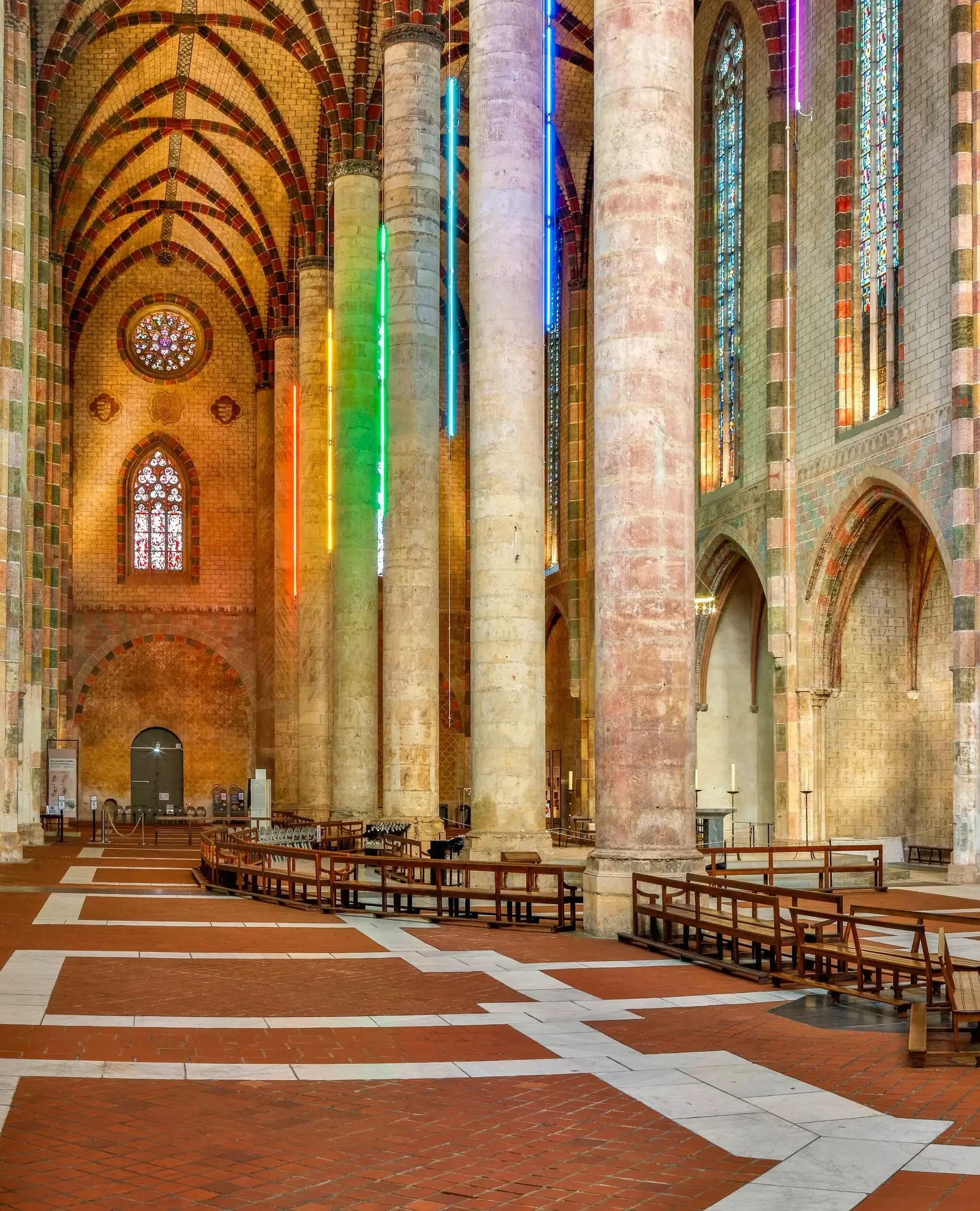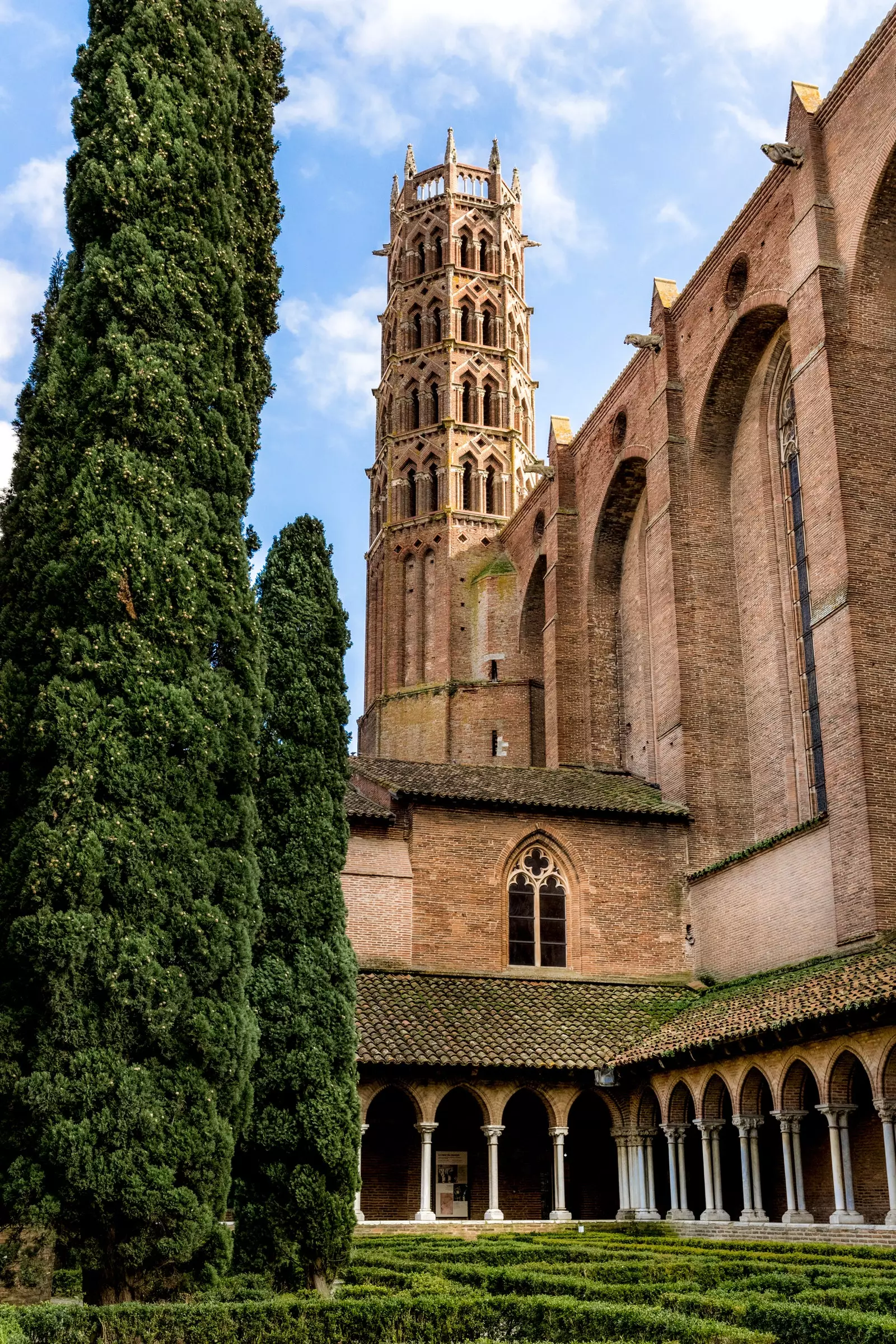Toulouse, the so-called pink city because of the color of its bricks and capital of Occitanie, it is large enough (the fourth in France) to have a wide range of offers, but it is also secluded and offers the quality of life that Toulousans boast about.
However, in this Occitan city, either by its geographical location, its history or a series of coincidences, there are a number of components that few cities can boast of. The cake that revolutionized Europe in the 16th century he had his cocaña fields around Toulouse, where he also the quoted violet was cultivated from the middle of the s. XIX.
In Toulouse there is the City of Space that flawlessly explains the mysteries of the universe. Following with a closer sky, the base of the Airbus was also installed in the pink city, Airmail Cradle, driven by heroic pilots, see Antoine de Saint-Exupéry, author of The little Prince.
Not far from these two great facilities, La Halle de la Machine entails another planet, that of the automatons, starring the gigantic Minotaur – who from time to time closes Toulouse to parade before the astonishment of its inhabitants–, the distinguished work among the fascinating creations by François Delarozière and Compagnie La Machine.

The Hall of the Machine.
THE PINK CITY, SORCERESS AND SURPRISING
Planets, planes, colors, perfumes and automatons envelop Toulouse in a bubble of magic and color which –from December 1 to February 1, 2022– is expanded to encompass the most resplendent of events: the Festival des Lanternes-Toulouse.
The place chosen to present a light show like few others –2,500 lanterns– is the Ritouret park, eight hectares of land in the town of Blagnac, near the airport, Aeroscopia and the assembly workshops of the Airbus. More than 80 Chinese craftsmen (welders, seamstresses, potters...), inheritors of the knowledge of several generations in the Zigong Lantern Manufactory –in the province of Sichuan– have created this bewitching platform that houses 180 tons of metal, 80,000 light bulbs, a ton of porcelain, 50,000 m2 of silk and some 30,000 ceramic pieces.
The origin of such lanterns dates back to the Tang dynasty, between the 7th and 10th centuries. Zigong has stood out since time immemorial for its skill in the manufacture of the lanterns that illuminate the Chinese New Year and that earned him the reputation of Lantern Capital. Their shapes are dancing dragons, lions, mythological animals and popular customs of the Chinese land. The reason for the lanterns some say it is due to Buddhist monks, in his eagerness to illuminate the encounter with the spirits on the night of the first moon of the Chinese New Year.
The Lantern Festival has passed through Hong Kong, Beijing, Shanghai. This will be its third edition in France: began in the town of Gaillac (Mid-Pyrenees), twinned with Zigong, and seeing the overwhelming success of the festival, this year it has moved to the outskirts of Toulouse, Well, as the CEO of the Toulouse tourist office, Jean Claude Dardolet, rightly says, it is a different, delicate and beautiful way of starting to open the doors of the city again.
flashlights fluorescent flowers, bamboos and forest animals they receive the visitor, who cannot believe such a vision, as he walks through the park made up of 45 luminous paintings. That one of 2D and 3D of 80 meters long represents Beijing's Daguanyuan Garden, inspired by the novel of the s. eighteenth The dream in the red chamber by Cao Xueqin and one of the great prides of Mao Tse-Tung. Another surrounds a nine-story, 15-meter-high temple that presides over the park, while a huge dragon bathes in the lake where the pagoda boat floats.
Follow the walk, enlivened by traditional Chinese music, under an arch of blue trees that shelter villages, exquisitely dressed women strolling on a bridge or lounging on a chaise longue. Deer of legend, like that of the magical Fuzhu, allegories to the dynastic epic of Ming and Qing, until reaching a bamboo forest where panda bears live.
A distant roar is heard through the mist. They are the dinosaurs that make the city of Zigong famous, that has the largest number of Jurassic fossils in the world and could not be missing in Blagnac, as well as the aeronautical history of Toulouse, which is endearingly represented in the airplane lanterns of the airmail.
If you look down a flashlight in the form of a squirrel appears; rises and others of birds fly over the lake and a flora that not even in dreams could be glimpsed. In a bend arise the performances performed by Sichuan Opera artists, they can change faces up to 30 times in each show.
WINTER IN TOULOUSE
Before the night is over and in order not to break the spell, it is advisable to walk among autumn trees on the banks of the Garonne with the arches of the bridges bending by the reflection of the water, just like the old hospital is duplicated.
Arriving at the newly opened Masion Soclo is feeling at home among cozy lamps, careful details, royal woods and some rooms that invite you to read, listen to the rain through its shutters and sleep in a comfortable bed. Dawn at the Maison. Its time to Artisan breakfast in the charming dining room attached to a garden that waits for spring to give its best under the shelter of striped umbrellas and wicker furniture.
If strolling through the rosy streets of Toulouse is a delight, delving into its cultural offer is fascinating. There is always something new to discover. For example the temporary exhibition of Théodule Ribot in the Museum of Fine Arts, Former convent of the Augustinians converted into a museum after the French Revolution and which plans a future expansion.
The museum houses from gargoyles saved from other temples and Romanesque capitals from cloisters of three different churches up to those works of art protected under its roof during the First World War; some may one day be claimed by heirs who could not be found for their return.

Museum of Fine Arts.
The vision of San Diego in the garden of Bartolomé Esteban Murillo and works by Anton van Dyck, Rubens and Guercino they also enjoy their presence in this institution. The organ that stars the church is a beautiful and improved copy of the original German of the s. seventeenth, Manufactured by the watchmaker craftsman Jürgen Ahreud. the beautiful piece rings every wednesday and participate in the renowned organ competition that fills two weeks of October in Toulouse.
The Ribot temporary exhibition It will be valid until January 10, 2022 and is dedicated to a painter, perhaps not so well known to everyone, self-taught and dedicated to his work, although of late success. Influenced by the s. XVII and painters like Ribera, Ribot is distinguished by the tones of the canvas, his alone, and by a torn strength that he captures both in the fiery portraits of him and in the still lifes. It should be mentioned, as part of the temporary exhibition, the loan of a Ribera granted by the Prado Museum.
Within the permanent exhibition, it is worth highlighting the busts of Marc Arcis, rosy as the brick of his city. Among the spaces destroyed for various reasons, there was a refectory that the French architect par excellence, Eugène Viollet-le-Duc, replaced by a spectacular staircase and exhibition halls.
It's time to eat the terraces are full, be it winter or summer and the options are many. We choose one of the best: La Gourmandine. Design papers dress the walls, as the mosaics in bright colors do on your floor and a delicate tableware accompanies Toulouse dishes, its famous sausage, a roast duck that falls apart, or some not so typical as the scallops with ginger and lemon.

Augustinian Convent.
CULTURAL LANTERNS
The famous Chateau d'Eau photo gallery will host in its rooms until January 16, 2022 an exhibition of the American documentary filmmaker Nicholas Nixon and the recurring photographs of his favorite models, his wife, Bebe, and his three sisters, a work that could only be called Brown Sisters.
And continuing with the photograph, in the Jacobin Convent, while admiring one of the most notable southern Gothic buildings, you can enjoy the retrospective work of the Toulouse photographer Jean Dieuzaide (he signed Yan to dry). Among his works is a documentary series on Spain in the 1950s; The photograph of Gypsy Woman from the Sacro Monte de Granada, 1951, is absolutely wonderful. Time when he met Salvador Dalí and made some of his most iconic portraits of him, like the one in which the painter emerges from the water carrying a jasmine flower at each end of his mustache.

Cloitre des Jacobins.
The next visit will be to the old slaughterhouse Les Abattoirs, today the Museum of Contemporary Art, which jealously and temporarily guards the six tapestries of The Lady and the Unicorn that, although they once traveled abroad, in France is the first to move from the Abbey of Cluny, his abode after being discovered in 1882 by Próspero Mèrimée in the Castle of Boussac.
The famous novelist George Sand mentioned them in her works, attracting public attention. In the castle the tapestries fulfilled their mission of giving some warmth to the walls and, with its flowery and animalistic motifs (Millefiori style), brighten up the dark days of winter. They belonged to a family of Italian origin settled in Lyon, where they had a fabric factory. The tapestries, made of silk and wool and dyed with vegetable dyes and cochineal, they were commissioned by the head of the family, Jean le Viste, from Flemish artisans and have been considered one of the masterpieces of Western art.
Given his wealth and power, Jena le Viste frequented high places but had no ancestry, she belonging to the so-called textile nobility, not blood. With what the businessman decided create your own shield, which the tapestries show and which exhibits a Lion, in honor of the city where he founded his loom empire and also a unicorn, the only animal impossible to hunt for its speed, a term that resembles Jean le Viste's family surname: vitesse (speed in French).
The 'lady' that appears in the six looms is not always the same, nor is she known either. She is a woman, tall and delicate, surrounded by a background that does not change, since this is common in all six, to lighten the work. Five of the tapestries represent the five senses, while in the sixth her epigraph, To my own desire, gives free rein to diverse interpretations, from the ambition of the 'lady' for absolute spirituality to the complete opposite, version in which she uses all five senses to conquer her knight. The Lady and the Unicorn It can be seen in Toulouse until the end of January 2022.
Neighbor of the Lady of the Unicorn, impressive is the curtain that Picasso made for the French Popular Front (1936) for Romain Rolland's play July 14. The curtain later arrived in Toulouse for a temporary exhibition, until in 1965 Picasso decided to donate to Toulouse such a large work – 11 meters long by eight meters wide – entitled Spoil of the Minotaur harlequin dress for which the museum had to excavate its soil in order to find a place for it.
Les Abattoirs does not give up its efforts to find new artists like Agathe Pitie, whose works are full of a iconography that seeks medieval motifs, stories and legends, but also current, such as that painting that you have to look at more than once because of how populated it is. Her characters, masterfully represented, are none other than the Corona virus after which furious nurses and doctors run, armed with gadgets of all kinds to finish him off.
You cannot leave Toulouse without having entered the palatial restaurant Le Bibent, the oldest brasserie in the city, in Capitol Square. Contemplate the frescoes on the ceiling, the chandeliers, guess the history that each corner entails to finally enjoy a gastronomy in which foie is not lacking, nor the traditional cassoulet with white beans and duck.
More articles:
- Toulouse, the first trip we want to do in 2021
- Toulouse travelogue
- 48 hours in Toulouse
- Toulouse, 'savoir vivre' with the family
